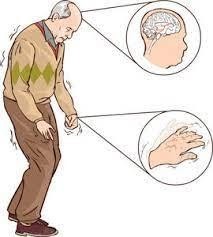The nurse enters the room of a client with Parkinson's disease who is taking carbidopa-levodopa. The client is rising slowly from the chair while the unlicensed assistive personnel (UAP) stands next to the chair. Which action should the nurse take?
Affirm that the client should rise slowly from the chair.
Tell the UAP to assist the client in moving more quickly.
Demonstrate how to help the client move more efficiently.
Offer a PRN analgesic to reduce painful movement.
The Correct Answer is A
A) Correct- Clients with Parkinson's disease often experience bradykinesia and impaired mobility. Rising slowly from a seated position is important to prevent falls and maintain stability. Affirming the correct movement strategy promotes the client's safety.
B) Incorrect- Telling the UAP to make the client move more quickly could be unsafe and not appropriate for a client with Parkinson's disease. Rapid movements might lead to balance issues or falls.
C) Incorrect- While demonstrating proper technique might be helpful, it's not the most immediate action the nurse should take. The client's safety and well-being are the priority.
D) Incorrect- Painful movement is not the primary issue here. The client's movement is slow due to Parkinson's disease, and this is expected.

Nursing Test Bank
Naxlex Comprehensive Predictor Exams
Related Questions
Correct Answer is A
Explanation
This client should be reassessed by the RN prior to transfer, as worsening perineal pain may indicate a hematoma, infection, or inadequate pain management. The RN should inspect the perineum, check the vital signs, and evaluate the effectiveness of the medication.
The other options are not correct because:
B. A multigravida whose peri-pad is 1/4 saturated with lochia rubra after one hour does not need to be reassessed by the RN, as this is a normal finding for a client two hours post-birth. Lochia rubra is a red-colored vaginal discharge that contains blood and debris from the placental site, and it usually lasts for 3 to 4 days after delivery. A peri-pad that is 1/4 saturated after one hour is within the expected range of blood loss.
C. A multigravida complaining of strong afterbirth pains when breastfeeding does not need to be reassessed by the RN, as this is a normal finding for a client two hours post-birth. Afterbirth pains are cramps caused by uterine contractions that help shrink the uterus and prevent bleeding. They are more common and intense in multiparous women and during breastfeeding, as oxytocin is released and stimulates contractions.
D. A primigravida who passed a small clot when she sat up on the edge of the bed does not need to be reassessed by the RN, as this is a normal finding for a client two hours post-birth. Small clots may form in the uterus or vagina due to pooling of blood during rest or anesthesia, and they are usually expelled when changing position or ambulating. As long as the clot is smaller than a plum and there is no excessive bleeding or pain, it is not a cause for concern.
Correct Answer is D
Explanation
A) Incorrect- This response might address the client's concern but doesn't directly address her dichotomous thinking or provide immediate therapeutic communication.
B) Incorrect- While showing happiness for the client's improvement is positive, this response does not address the client's behavior or engage with her dichotomous tendency.
C) Incorrect- This response acknowledges the client's liking but doesn't address the dichotomous thinking pattern or provide an effective therapeutic response.
D) Correct- answering this question encourages the client to express her concerns and perceptions, fostering communication. This approach acknowledges the client's feelings and provides an opportunity for her to discuss the issue, potentially leading to a productive conversation.
Whether you are a student looking to ace your exams or a practicing nurse seeking to enhance your expertise , our nursing education contents will empower you with the confidence and competence to make a difference in the lives of patients and become a respected leader in the healthcare field.
Visit Naxlex, invest in your future and unlock endless possibilities with our unparalleled nursing education contents today
Report Wrong Answer on the Current Question
Do you disagree with the answer? If yes, what is your expected answer? Explain.
Kindly be descriptive with the issue you are facing.
